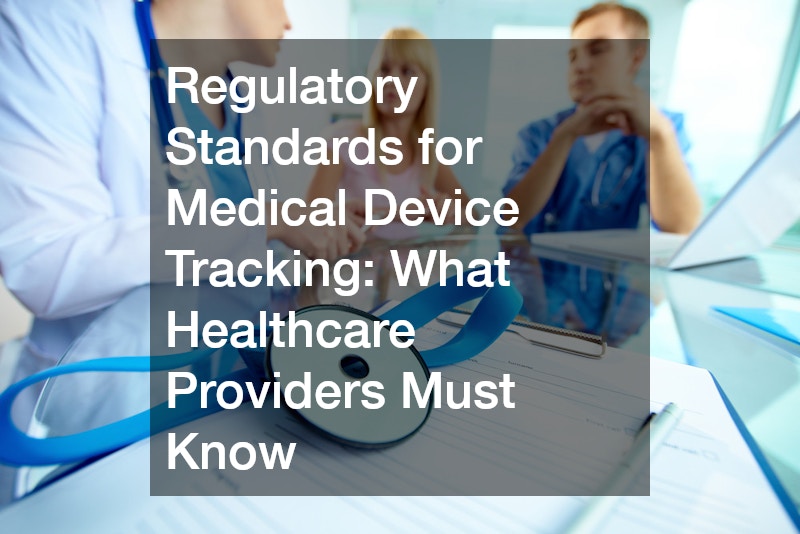In the rapidly evolving field of healthcare, the importance of efficient and reliable medical device tracking cannot be overstated. Medical devices play a critical role in diagnosing, treating, and monitoring patients. Ensuring these devices are tracked and managed effectively is crucial for patient safety, regulatory compliance, and operational efficiency. For healthcare providers, understanding the regulatory standards for medical device tracking and the integration of technologies like GPS trackers for medical equipment is essential.
The Importance of Medical Device Tracking
Medical device tracking involves monitoring and managing the location, usage, and maintenance of medical equipment. This process is vital for several reasons:
Patient Safety: Proper tracking ensures that devices are functioning correctly and are available when needed, reducing the risk of medical errors and enhancing patient care.
Regulatory Compliance: Healthcare providers must adhere to various regulatory requirements to ensure patient safety and avoid legal issues.
Operational Efficiency: Efficient tracking minimizes equipment loss, reduces downtime, and ensures optimal utilization of medical devices.
Regulatory Standards for Medical Device Tracking
Several regulatory bodies have established standards and guidelines to ensure the safe and effective tracking of medical devices. These regulations aim to protect patient safety and ensure that healthcare providers maintain high standards of care.
1. FDA’s Unique Device Identification (UDI) System
The U.S. Food and Drug Administration (FDA) has implemented the Unique Device Identification (UDI) system to improve the identification and tracking of medical devices. The UDI system requires:
Labeling: Medical devices must have a unique identifier on their labels, which includes both human-readable and machine-readable formats.
Database: The identifiers must be entered into the FDA’s Global Unique Device Identification Database (GUDID), which provides a comprehensive listing of all medical devices.
The UDI system helps in the quick identification of devices, improves the accuracy of adverse event reporting, and enhances the effectiveness of recalls.
2. EU Medical Device Regulation (MDR)
In the European Union, the Medical Device Regulation (MDR) governs the tracking and management of medical devices. Key requirements include:
EUDAMED Database: Devices must be registered in the European Database on Medical Devices (EUDAMED), which centralizes information on devices, manufacturers, and market surveillance.
Traceability: Manufacturers and healthcare providers must ensure traceability throughout the supply chain, from production to patient use.
The MDR aims to increase transparency, enhance patient safety, and ensure that devices meet rigorous quality standards.
3. ISO 13485: Quality Management Systems
ISO 13485 is an international standard for quality management systems specific to medical devices. It outlines requirements for:
Documentation: Comprehensive documentation of all processes related to the design, production, and distribution of medical devices.
Tracking: Systems must be in place to trace devices throughout their lifecycle, from raw materials to final product and post-market surveillance.
Compliance with ISO 13485 ensures that organizations maintain high standards of quality and safety.
Integrating GPS Trackers for Medical Equipment
Modern technology offers advanced solutions for medical device tracking, including the use of GPS trackers for medical equipment. These devices provide real-time location data, enabling healthcare providers to:
Monitor Equipment Location: Know the exact location of critical medical devices at all times, ensuring they are available when needed.
Prevent Loss and Theft: Reduce the risk of losing expensive medical equipment and prevent theft.
Optimize Utilization: Ensure that devices are used efficiently across different departments, reducing downtime and improving patient care.
Best Practices for Healthcare Providers
To comply with regulatory standards and optimize medical device tracking, healthcare providers should consider the following best practices:
Implement Robust Tracking Systems: Invest in advanced tracking technologies, including GPS trackers for medical equipment, to monitor device location and usage in real-time.
Maintain Accurate Records: Ensure all devices are properly labeled and registered in relevant databases, such as the FDA’s GUDID or the EU’s EUDAMED.
Train Staff: Provide comprehensive training for staff on the importance of medical device tracking and how to use tracking systems effectively.
Conduct Regular Audits: Perform regular audits of tracking systems and processes to ensure compliance with regulatory standards and identify areas for improvement.
Conclusion
Medical device tracking is a critical component of modern healthcare, ensuring patient safety, regulatory compliance, and operational efficiency. By understanding and adhering to regulatory standards such as the FDA’s UDI system, the EU’s MDR, and ISO 13485, healthcare providers can enhance their tracking practices. Additionally, integrating technologies such as a GPS tracker for medical equipment can further optimize the management and utilization of medical devices. By implementing these best practices, healthcare providers can ensure the highest standards of care and operational excellence.
.


